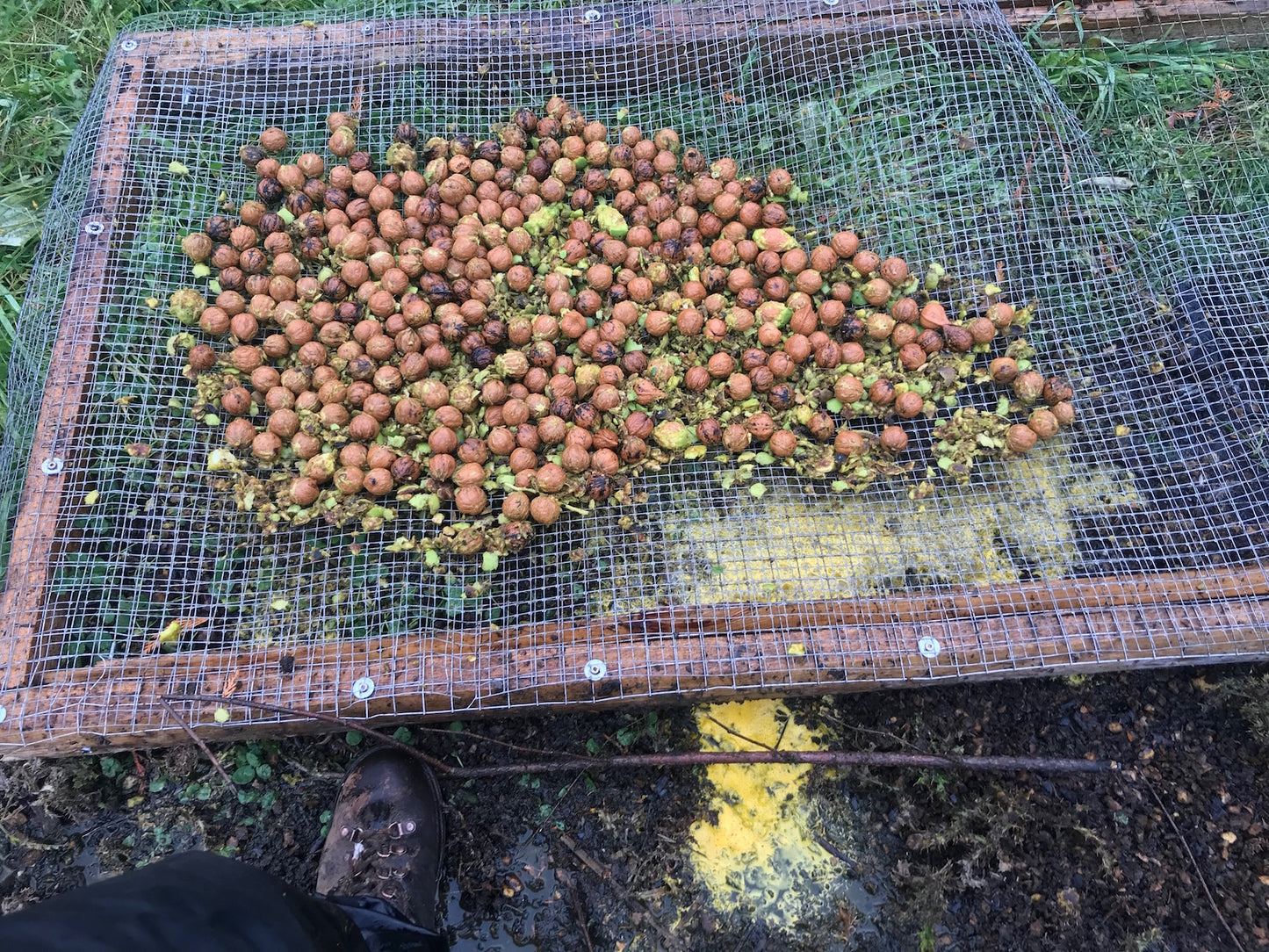Heartnut (Juglans ailantifolia)
Heartnut (Juglans ailantifolia)
Local Pickup Available in Harrop, BC
Couldn't load pickup availability
Why We Grow It
Why We Grow It
Heartnuts are a valuable addition to food forests and silvopasture systems due to their multifunctionality. Their canopy provides shade for understory plants, and their nuts serve as a nutritious food source for both humans and wildlife. Their ability to thrive in diverse conditions, coupled with their ornamental beauty, makes them a standout choice for permaculture designs and integrated farming systems. With proper siting to avoid frost damage, Heartnuts can enhance biodiversity, productivity, and aesthetic value in any sustainable landscape.
How the Plant Grows
How the Plant Grows
Heartnuts grow quickly, establishing themselves as medium to large shade trees with wide-spreading crowns. Their lush, tropical-looking leaves emerge in spring, providing dense foliage through summer. This makes Heartnuts a great firesmart tree. By autumn, the trees yield abundant clusters of heart-shaped nuts, which ripen and drop for easy collection. The tree’s rapid growth and robust root system make it adaptable to a variety of landscapes.
Plant Size
Plant Size
Size at Maturity- Canopy Layer. Reaches 30-50 feet tall with a wide-spreading crown of 40-60 feet.
Current Size- Large 1'-2'+, 1 year old seedling
Additional Info
Additional Info
Heartnuts derive their name from their distinctive heart-shaped nuts, which crack neatly into two halves when opened with the right tools. A Japanese native, the Heartnut has gained popularity in temperate regions for its sweet, walnut-like flavor and ornamental appeal. The nuts are rich in healthy fats and proteins, making them a nutritious food source for humans and wildlife alike. In agroforestry and permaculture systems, Heartnuts serve as shade providers and soil stabilizers, while their annual nut production offers an economic or subsistence yield for growers.
The Heartnut, a variant of the Japanese Walnut, is a remarkable tree valued for its unique, heart-shaped nuts and lush, tropical-looking foliage. Growing rapidly in well-drained, calcium-rich soils, this beautiful shade tree offers bountiful nut harvests nearly every year. With a mild, non-bitter flavor, Heartnuts are a delightful addition to any homestead or food forest, serving as both a productive nut tree and a great shade tree for buildings or out in the pasture for animals.
Share


Plant Highlights
-

Water
Moderate water needs; consistent moisture during establishment and nut development enhances productivity.
-

Pollination
Monoecious and wind pollinated; planting multiple trees is required for cross-pollination and nut yield. Can also be pollinated by butternut and buartnut.
-

Soil
Thrives in well-drained, fertile soils with high calcium content; prefers slightly acidic to neutral pH (6.0-7.0)
-

Years to Bear
Begins producing nuts in 6-10 years from planting
-

Hardiness
Zone 4/5, tolerating temperatures as low as -30°C. Zone 4 is experimental, use microsites and deep mulch.
-

Solar
Prefers full sun but can tolerate light shade in warmer climates
Subscribe to our emails
Lots of Free Growing Info. Be the first to know about new plants and exclusive discounts.








